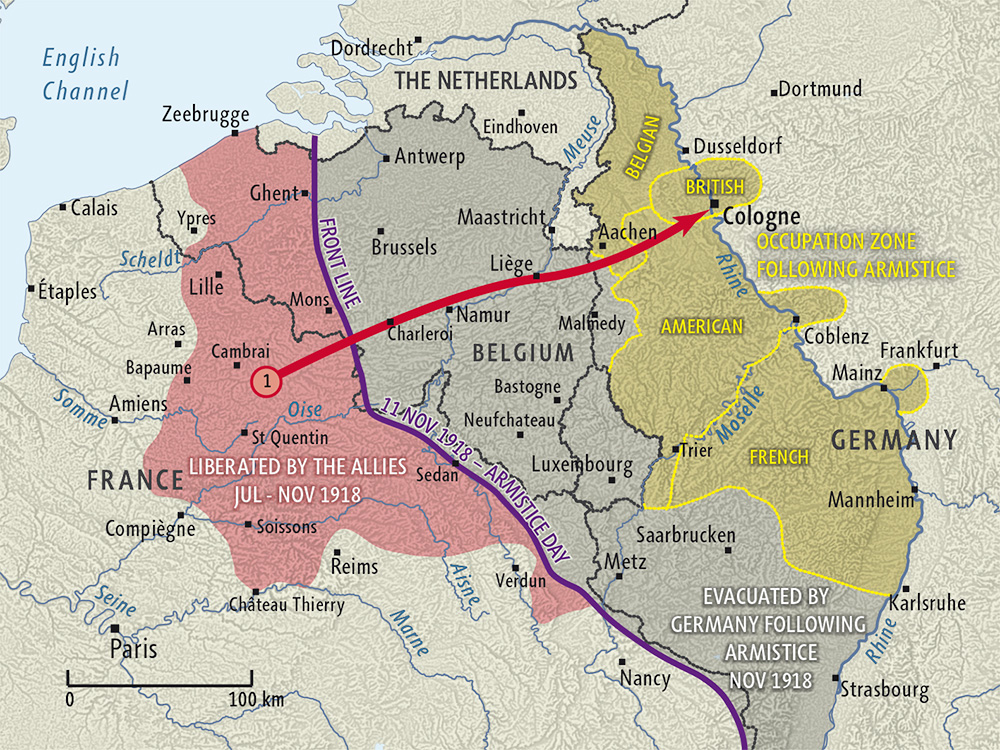
You can also download a hi-res copy as a pdf (2.5 mbs).
This map shows the areas from which the German army was forced to withdraw during the late stages of the First World War and following the Armistice of 11 November 1918.
Between July and November 1918 the Allies pushed the overstretched and demoralised German army eastward across the area on the map shaded red. By the time an armistice came into effect at 11 a.m. on 11 November (at which point the front line extended along the purple line above), most of northern France and part of Belgium had been liberated from German occupation.
The conditions of the Armistice gave Germany 14 days to evacuate from all remaining occupied territory and German territory claimed by France and Belgium (the grey-shaded area), and 28 days to withdraw its armed forces across the river Rhine (to the right of the map).
The Allies insisted on sending their armies to occupy the demilitarised Rhineland and establishing 30-km bridgeheads centred on Cologne, Coblenz and Mainz. This was to ensure that Germany would not break the Armistice’s ceasefire before the terms of peace could be agreed to. The Allied forces’ respective occupation zones are highlighted in yellow on the map.
When news of the Armistice was received on 11 November, most of the New Zealand Division was billeted at Beauvois and Fontaine (marked by the number 1 on the map). On 28 November they began their march towards the British occupation zone around the industrial city of Cologne (their route is shown by the red arrow). On 19 December, after a 240-km march, the New Zealand Division entered German territory. The infantry then boarded trains and arrived in Cologne next day, followed on Boxing Day by the artillery units.
From late December, New Zealand soldiers who had volunteered in 1914-15 and those who were married were sent back to England and from there to New Zealand. When it became clear that Germany was not capable of resuming combat, the repatriation process sped up. On 25 March 1919 the last draft of New Zealand soldiers left Cologne.


Community contributions